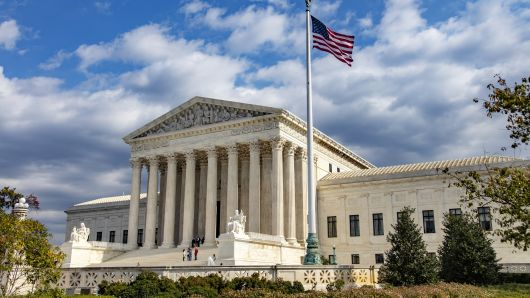Widgetized Section
Go to Admin » Appearance » Widgets » and move Gabfire Widget: Social into that MastheadOverlay zone
Impact of Supreme Court Rulings on Homelessness
The views expressed are those of the author and do not necessarily reflect the views of ASPA as an organization.
By Amanda L McGimpsey
February 10, 2020

They say that elections have consequences, but I would argue that it is Supreme Court rulings that can be just as consequential when it comes to swift policy changes on the state and local level. While it may take years for a court case to finally make its way to the highest court in the land, once a ruling has been made it can create a wave of activity for public administrators across the nation as they scramble to interpret and apply the ruling to their local jurisdictions.
Case in point, the recent Supreme Court ruling of Martin vs. City of Boise, which argued that homeless persons cannot be punished for sleeping outside on public property in the absence of adequate alternatives. Originally filed in 2009 in Idaho courts, the case eventually made its way through the court system and on December 16th, 2019 the Supreme Court upheld an earlier ruling by the 9th Circuit. The Supreme Court’s decision means that the ruling becomes immediately binding in nine states who are mostly located on the west coast in the epicenter of the homeless crisis.
After ten years navigating the court system, state and local governments were suddenly faced with an imminent need to interpret and apply the ruling or be in danger of civil suits if they continued to issue criminal citations for sleeping on the streets. While homeless advocates praised this ruling because it broke the cycle of criminalization of the homeless, many cities had law enforcement concerns because they use criminal citations to deter homeless from sleeping on the streets. Under the ruling, “As long as there is no option of sleeping indoors, the government cannot criminalize indigent, homeless people for sleeping outdoors, on public property, on the false premise they had a choice in the matter.” However, the ruling did not provide clear guidelines on what can be considered a reasonable option.
State and local governments were left with a number of questions for how to interpret and apply the ruling. Would cities need to provide a bed equal to the exact number of homeless or would an emergency shelter that accommodated a percentage of the homeless meet the threshold? Do safe parking programs count as, “Sleeping indoors?” And can a person who has mental health issues even be capable of pursuing shelter?
As you can see, this was not a simple task but because it became effective immediately, states and local governments had to act quickly. This lead some states, like California, to take a radically different approach. Within a month of the ruling, Governor Newsom of California had updated his spending proposal to include $1.4 billion to address homelessness, of which $750 million was to be distributed directly to service providers. This was radically different from the traditional approach of distributing funds only to cities and counties.
By directly funding service providers, Governor Newsom reasoned that it would provide faster results rather than forcing cities and counties to develop and administer housing programs. If approved, the new spending would become available at the start of the next fiscal year beginning in July. It should be noted that the proposal was met with some criticism over concerns of service provider accountability and transparency.
Some California cities have taken a similar approach, including El Cajon, California whose city counsel recently approved a recommendation to seek community partners to increase the number of beds available to homeless in the city. However, the decision was met with concern that the partners under consideration would place restrictions on who would be eligible for the beds such as religious qualification or enrollment in a substance abuse program.
Additionally, some counties are also taking action. For instance, the San Diego County Board of Supervisors approved a plan to reallocate funds to support housing options in San Diego’s unincorporated areas. These unincorporated areas are often overlooked for homeless support services but would still be subject to the Martin vs. City of Boise ruling. San Diego County Board of Supervisors was met with praise for their quick response to ensure that the unincorporated areas were in compliance.
In these three examples, it is clear the effect that a Supreme Court ruling can have at the state and local level. The issue of homelessness has been particularly difficult to solve in California because of the lack of affordable housing and the growth of the NIMBY movement (Not In My Back Yard). For years, homeless advocates have been supporting a housing first approach but were often met with resistance by politicians. However, with one Supreme Court ruling the political landscape has considerably shifted and realigned itself behind a common cause, providing more housing options for the homeless. Regardless of the motivations behind the shift, it now has thousands of public administrators working towards a common goal. That is the power of a Supreme Court ruling.
Author: Amanda L McGimpsey is a policy analyst and community advocate focused on creating partnerships to solve social issues. She is currently pursuing an MPA from San Diego State University. With a decade of experience working in the field of higher education she has an interest in reexamining complex social issues to promote social equity. [email protected]


Brigid
November 18, 2020 at 2:50 pm
I am confused by this article. I thought the Supreme Court declined the petition to even hear this case? I didn’t think they ruled on anything. Please correct me if I am wrong. Doing research on this topic for a project and this article really threw me off.
Thank you.